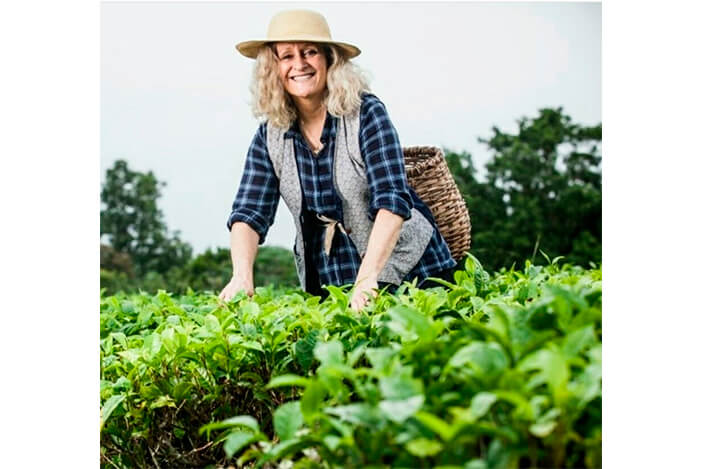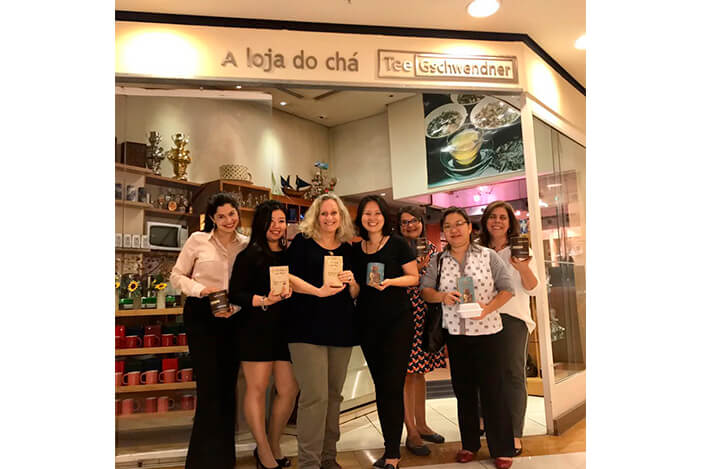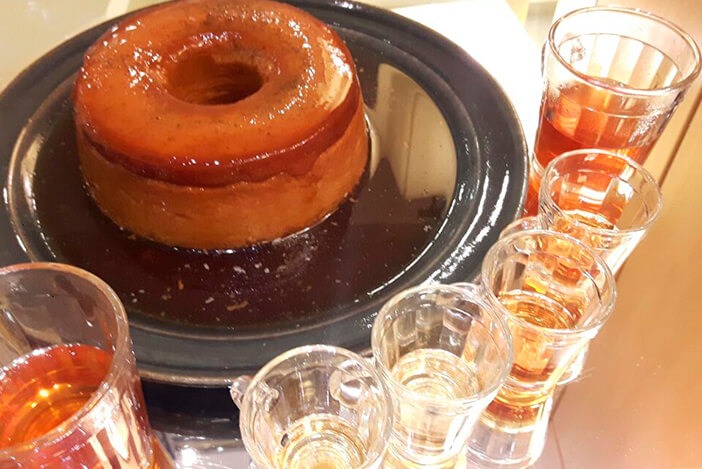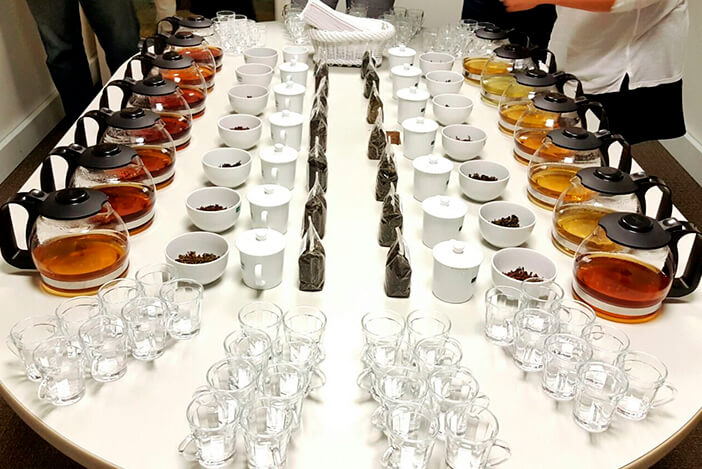“Mate grass beyond the chimarrão”
For cultural reasons, tea was only taken in Brazil by medical recommendation. In each family, there was always someone (usually women) who knew exactly the healing roles and properties of each of the different types. It was nothing glamorous, not at all like English services.

At a visit to Obaatian’s tea farm in Registro (SP)
Until that time, a southern lady with an odd name, Carla Saueressig, sold an apartment and in 1999 opened a teashop at the Iguatemi Shopping Mall in São Paulo, named Loja da Chá – Tee Gschwendner, a franchise of the German brand, which was the largest teashop in South America.
At that time, Iguatemi reigned absolute, as the Mecca of luxury in São Paulo, and its work of harmonizing with teas began to change this scenario. Carla committed all her money and dedication to the venture, showing that it was possible to use the herbs in cooking, in simpler combinations, in both cakes and feijoada.
She became a benchmark in the gastronomic scene, teaching renowned chefs to use tea as a seasoning, creating a course for harmonizing teas with beers and wines. In the Brazilian Association of Sommeliers, for many years, she was a tea teacher, besides having created her own methodology.

Her shop, based in Shopping Iguatemi, was a landmark for the tea market in Brazil.
Anyway, if the tea market exists in Brazil it is thanks to the work of this tireless worker, who loves what she does. Unfortunately, the Tea Shop had to be shut down because of one of the countless economic crises in the country, leaving thousands of tea lovers helpless, after all the store also functioned as a meeting point. Indeed, it was a real Disneyland for connoisseurs: more than 240 types, plus a gastronomic menu whose main ingredient was tea.
With the closing of the physical store, Carla returned to Porto Alegre but continued to travel a lot, helping refine the palate of many people, ministering her courses and consultancies throughout the country, besides dedicating herself to creating blends of teas and infusions. “I have already created more than 100 blends for both individuals and companies.”

Earl Grey fla

Bolo de Chiffon com cobertura lapsang souchong e doce de leite
Mate herb: the new old passion
As a typical southern lady, Carla loves mate herbs and chimarrão. About 10 years ago, she went after the pure mate, in leaves, to make blends. She got to a city named Ilópolis, in the Alto Taquari Valley (Rio Grande do Sul), whose name derives from Ilex paraguaiensis and polis, that is, the mate city. The local economy is based on the cultivation, extraction and industrialization of the mate herb.
With an average height between 700 and 800 meters, the site has about 100 small, family-owned properties with native mate herb plantations, whose production is organic. “I am working together with the city government, the State Government, the University of Passo Fundo, in partnership with the companies Inova Mate and Mate Quero, to help producers obtain high-quality mate herb, to use only the leaf and drink tea in the cup. It is the mate herb along with chimarrão,” she explains.

In addition to the shop, Carla gave courses and carried out tastings, in addition to introducing tea as an ingredient in Brazilian cuisine.
“For the time being, research is being done to discover the cultivars and their characteristics,” says Carla. Anyway, she already set up a caravan of tea lovers to get to know the place and, on the 6th, 7th and 8th of September, the second class will depart, aiming to harvest and watch a lecture on the historical process of cultivation and much more! To sign up, one should send an email to alojadochatg@gmail.com.
In the first caravan, the participants sampled mate herbs from different biomes, such as forest, citrus, mixed organic and of different cultivars as the periquita, purple stalk and white stalk. “We had the pleasure of promoting one of the first tastings of mate herb in Brazil. Our next step is experimentation: we wish to cook and drink the mate herb and bring it to a special product category, like coffee and chocolate”, she conclludes.
How did the mate herb emerge?
The first ones who cultivated the mate herb were the Guarani Indians, who inhabited the southern region of Brazil, defined by the Paraná, Paraguay and Uruguay river basins, at the time the early Spanish settlers arrived.

At a visit to Yamamotoyama, Araucária, Paraná.
Photos: Carla Saueressig



